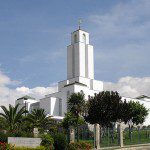
(Wikimedia Commons public domain photograph)
***
[What with recent travels, and recovery from recent travels and catching up after them, and, most importantly, having just returned my computer to Brigham Young University (as is required upon retirement) and bought a new one, I’ve fallen behind on blogging and on many other things. I will try to make up the deficit over the next few days. If I can figure out how to make my new computer work.]
A new article went up today, by M. Steve Anderson, in Interpreter: A Journal of Latter-day Saint Faith and Scholarship:
“The Practice and Meaning of Declaring Lineage in Patriarchal Blessings”
Abstract: In this paper, I show that declarations of lineage in patriarchal blessings have, since the earliest days of the Restoration, evolved in terms of frequency of inclusion, which tribal lineages predominate, and understanding of the meaning of the declaration. I argue for a non- literal understanding consistent with scripture and science, but posit that these declarations have deep and important significance in connection with the gathering of Israel.
***
While we’re at it, here are some links to a few articles in a past issue of Interpreter that you might find of interest:
Stephen O. Smoot, “Feasting on the Book of Mormon”
Abstract: The Neal A. Maxwell Institute for Religious Scholarship has recently published a new study edition of the Book of Mormon. Edited by Grant Hardy, the Maxwell Institute Study Edition (MISE) incorporates important advances in Book of Mormon scholarship from the past few decades while grounding the reader’s experience in the text of the Book of Mormon. The reformatted text presented in the MISE improves the readability of the Book of Mormon, while footnotes, charts, bibliographies, and short explanatory essays highlight the strides made in recent years related to Book of Mormon scholarship. The MISE is a phenomenal edition of the Book of Mormon that is representative of the sort of close attention and care Latter-day Saints should be giving the text.
Review of Grant Hardy, ed. The Book of Mormon: Another Testament of Jesus Christ, Maxwell Institute Study Edition (Provo, UT: Neal A. Maxwell Institute for Religious Scholarship, Religious Studies Center at Brigham Young University / Salt Lake City: Deseret Book, 2018). 648 pp. $35.00 (paperback).
Brian C. Hales, “Curiously Unique: Joseph Smith as Author of the Book of Mormon”
Abstract: The advent of the computer and the internet allows Joseph Smith as the “author” of the Book of Mormon to be compared to other authors and their books in ways essentially impossible even a couple of decades ago. Six criteria can demonstrate the presence of similarity or distinctiveness among writers and their literary creations: author education and experience, the book’s size and complexity, and the composition process and timeline. By comparing these characteristics, this essay investigates potentially unique characteristics of Joseph Smith and the creation of the Book of Mormon.
Craig L. Foster, “Assessing the Criticisms of Early-Age Latter-Day Saint Marriages”
Abstract: Critics of The Church of Jesus Christ of Latter-day Saints have accused Joseph Smith and other early Latter-day Saint men of pedophilia because they married teenaged women. Indeed, they have emphatically declared that such marriages were against 19th-century societal norms. However, historians and other experts have repeatedly stated that young people married throughout the 19th-century, and such marriages have been relatively common throughout all of US history. This article examines some of the accusations of early Latter-day Saint pedophilia and places such marriages within the greater historical and social context, illustrating that such marriages were normal and acceptable for their time and place.
RoseAnn Benson, “Campbellites and Mormonites: Competing Restoration Movements”
Abstract: In October 1830, Oliver Cowdery, Peter Whitmer Jr., Parley P. Pratt, and Ziba Peterson were the first missionaries sent to travel through the western states to the Indian territory at the far reaches of the United States. Pratt, a former resident of northeastern Ohio, suggested they stop in the Kirtland, Ohio, area and visit his preacher friend, Sidney Rigdon. It was Rigdon who had earlier convinced Pratt that the restoration of the ancient order that included faith in Jesus Christ, repentance, baptism for the remission of sins, and the promise of the gift of the Holy Spirit could be found in Alexander Campbell’s restoration movement. Within a few weeks, the four missionaries baptized Rigdon and more than 100 new converts into Joseph Smith’s restoration movement — many of whom had been members of Campbell’s restoration movement. Although both Alexander Campbell and Joseph Smith called their movements restorations, the foundation upon which each was built was very different.
Taylor Halverson, “Was Adam a Monotheist? A Reflection on Why We Call Abraham Father and Not Adam”
Abstract: The three great monotheistic religious traditions (Judaism, Christianity, and Islam) all claim Abraham as father and prototypical monotheist. Though Adam is the putative first father in all of these traditions, he is seldom remembered in Judeo-Christian scriptural, apocryphal, or pseudepigraphic texts as an exemplary monotheist. This essay briefly reviews why Abraham retains the lofty title “Father of Monotheism” while exploring how Latter-day restoration scripture adds to and challenges this ancient tradition vis-à-vis enhanced understanding of Adam’s covenantal and monotheistic fidelity to God.
Janet Ewell, “Seeing Psalms as the Libretti of a Holy Drama”
Abstract: Psalms was the favorite Old Testament book at Qumran and in the New Testament; the Book of Mormon contains more than three dozen allusions to Psalms. While Psalms contains both powerful, poetic words of comfort and doctrinal gems, many psalms also seem to careen between praise, warning, comfort, military braggadocio, and humility, sometimes addressing the Lord, sometimes speaking in the voice of the Lord or his prophets. The texts that most strongly exhibit such abrupt shifts may yield greater meaning if they are read as scripts or libretti of a sacred, temple- based drama.
***
I was really pleased to see how central a role was taken by the Church of Jesus Christ of Latter-day Saints — and how literally central the Lima Peru Temple was — in this celebration of the bicentennial of the nation’s independence:
I’ve watched most of the program. Even if you don’t speak Spanish, it’s interesting.
***
Finally, here’s a new item from the unfortunately very important Neville-Neville Land blog:
“Jonathan Neville’s obsession with “conformity””











